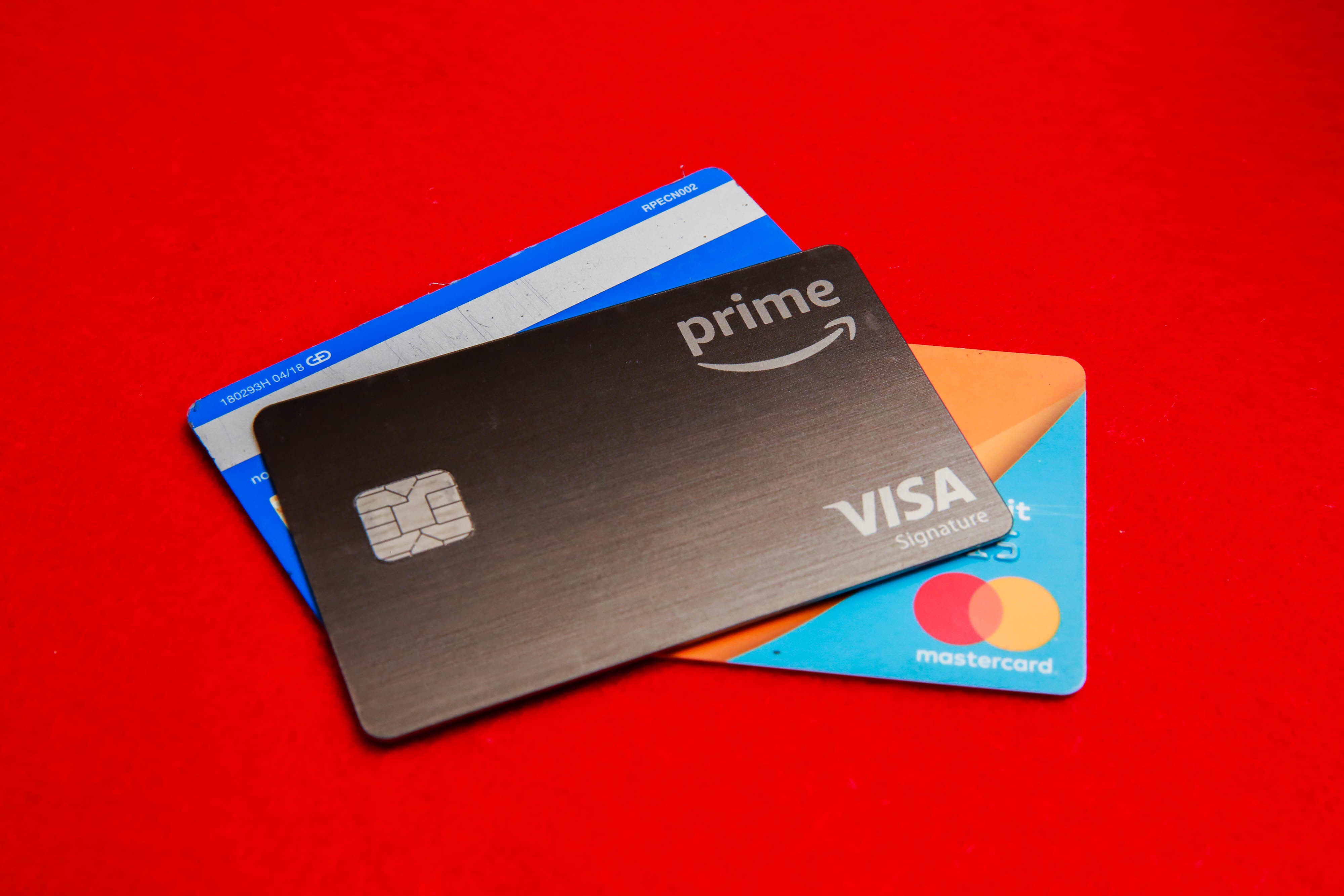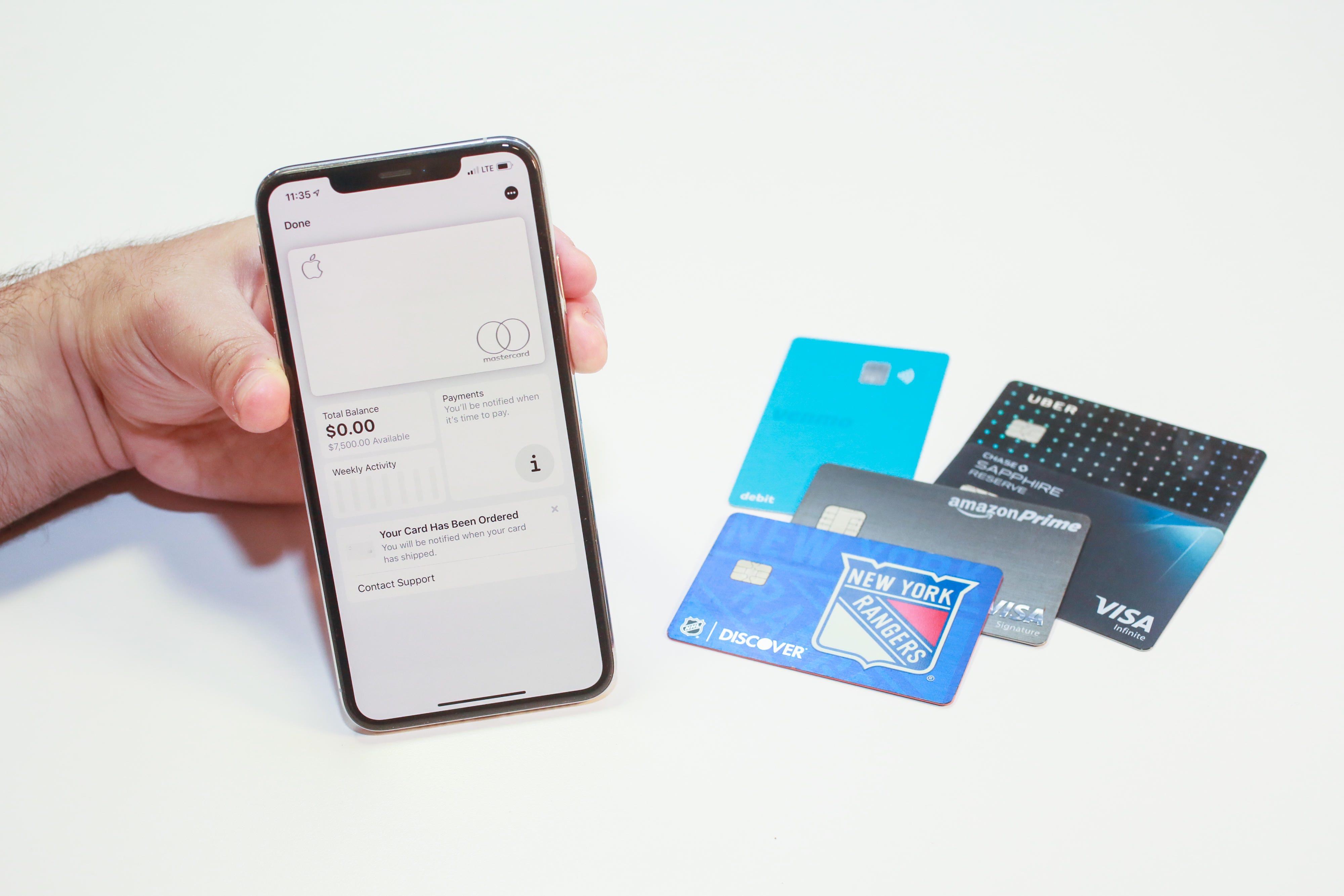9 Credit score Card Errors You Do not Even Know You are Making

[ad_1]
The usage of a bank card whilst buying groceries could have its advantages — you’ll earn rewards, construct your credit score and double down on commute issues and perks. However whilst a bank card will also be handy, there are specific dangers you will have to find out about.
Should you pay a card overdue or do not pay your stability in complete, you’ll incur charges and further hobby fees that make your purchases costlier in the end, particularly making an allowance for lately’s emerging rates of interest, fueled via skyrocketing inflation. You have to additionally finally end up jeopardizing your credit score rating, which might make it more difficult to shop for a space or get a mortgage.
So what are the largest errors well-meaning other folks repeatedly make with their bank cards — and what are you able to do to keep away from monetary pitfalls? I spoke with mavens for his or her tips, and recognized one of the crucial most deadly bank card behaviors. For extra, be told tips on how to get out of bank card debt and why now could be the proper time to repay your bank cards.
Paying your bank card invoice overdue
Lacking a cost or creating a overdue cost on a bank card is a significant no-no. Colleen McCreary, a client monetary recommend at Credit score Karma, says that is the most typical mistake other folks make with bank cards. Your cost historical past is a significant factor of your credit standing and accounts for greater than 30% of your total rating, McCreary stated in an electronic mail.
A overdue cost is a one-way price tag to ruining your credit score, and the ding to your record may not pass away for seven years. Even worse, in case your bank card invoice stays unpaid, your creditor may just promote your debt to a suite company, which might tank your credit standing.
One of the best ways to keep away from overdue charges is to set a per 30 days reminder to pay your invoice, and a minimum of make the minimal cost. Maximum bank card corporations can even help you arrange per 30 days auto-payments, so you will not skip a beat. In case you are apprehensive you would possibly not have sufficient every month to hide an autopayment, consider you’ll all the time set it to pay out the minimal, the overall stability or a specified quantity.
The credit score bureau Experian notes that some bank card issuers might supply a brief grace duration for overdue funds, whilst others will mark your cost overdue once you pass over your due date.
Should you do pay your bank card invoice on time frequently and by chance pass over one cost, name your financial institution once imaginable to peer if it’s going to be offering one-time forgiveness, supplied you pay in complete on the time of your name. Your financial institution may refund your overdue price and hobby, however it is not required to do anything else.
Whilst some bank card corporations might mark your cost overdue after someday, the ones overdue funds aren’t reported to credit score bureaus for 30 days, in step with credit score reporting corporate Equifax, Should you act temporarily to modify your issuer’s determination to mark your cost overdue, that you must keep away from destructive your credit score rating. In case you are not able to pay your invoice, you’ll additionally ask your issuer if it may create a cost plan for you.
Prevent paying your bank card invoice overdue
Sarah Tew/CNET
Maxing out your bank cards
After cost historical past, the second one greatest consider figuring out your credit score rating is the share of to be had credit score that you’re recently the use of. Known as the “credit score usage ratio,” this issue is calculated via dividing the quantity you presently owe via your overall credit score restrict, or your most borrowing possible.
Keeping up a prime stability to your bank card in comparison to your overall credit score restrict will building up your overall proportion of credit score used and harm your credit score rating.
You generally wish to stay your credit score usage ratio underneath 30% for a just right credit score rating, although much less is best. A just right rule of thumb is to make use of 10% of your overall credit score restrict and pay it off every month so you are no longer sporting a stability. As an example, in case your credit score restrict is $5,000, you would not wish to borrow greater than $1,500 and preferably $500 or much less.
Should you in finding your bank card restrict is just too low — as an example, the quantity you wish to have to rate in your card exceeds the full you’ll rate on a given card — you’ll all the time ask your bank card issuer for an building up.
Maxing out bank cards may just additionally price you giant cash if you’ll’t repay the full via the cost cut-off date. “The upper your exceptional stability (the amount of cash you owe), the extra hobby you’ll be able to pay, which may make it much more tricky to climb out of debt,” McCreary stated.
Making simplest the minimal cost to your bank card
Your minimal cost is the bottom quantity that your bank card issuer will can help you pay towards your bank card invoice for any given month — as an example, $50. The minimal per 30 days cost is decided via the stability to your bank card (what you owe on the finish of the pay duration) and your rate of interest. It is usually calculated as both 2 to 4% of your stability, a flat price or the upper quantity between the 2.
Making simplest minimal funds is without doubt one of the maximum commonplace bank card errors, in step with Katie Bossler, a high quality assurance specialist at GreenPath monetary wellness.
Even if making minimal funds on time remains to be some distance higher than paying overdue or ignoring your invoice, paying simplest the minimal may cause hobby to construct, making it a lot more tricky to repay your stability totally.
As an example, if in case you have a $2,000 stability with a minimal cost of $50 on a bank card with an APR (annual proportion fee) of 14.55%, it’s going to take 56 months (or nearly 5 years) to repay your debt, and you’ll be able to finally end up paying a complete of $753 in hobby. On the other hand, if you are making a plan to pay the stability off in a 12 months, your funds can be $180, and you would simplest pay $161 in hobby.
It simplest will get worse because the APR is going up — at a moderately prime however no longer unreasonable fee of 25%, a minimal cost of $50 would take 87 months (or somewhat greater than seven years) to repay a $2,000 debt, with a large $2,344 in hobby funds. In the meantime, upping the per 30 days funds to the similar $180 would repay your debt in 13 months, and price simplest $281 in hobby.
This is an instance of ways making greater than minimal funds can prevent important cash in hobby.
How minimal funds result in upper hobby
| Bank card stability | Annual proportion fee | Per month cost | Time had to pay stability | Further hobby paid |
|---|---|---|---|---|
| $2,000 | 14.55% | $50 | 4.7 years | $753 |
| $2,000 | 14.55% | $180 | 1 12 months | $161 |
| $2,000 | 25% | $50 | 7.3 years | $2,344 |
| $2,000 | 25% | $180 | 1.1 years | $281 |
One of the best ways to keep away from paying any hobby in any respect to your bank cards is to repay your complete stability every month. If you’ll’t do this, Bossler, the standard skilled from GreenPath monetary advisors, suggests pausing use of the bank card if you are paying it off, and paying greater than the minimal to take action.
Taking out a cash advance on your credit card
Withdrawing a cash advance with a credit card is a big mistake. “It’s the most expensive way to pay for things,” Bossler said. Cash advances are a method of borrowing money from your credit line to put cash in your pocket “now.”
Convenient as it may be, a cash advance uses an interest rate that is typically significantly higher than your standard APR. Most cards will also include a transaction fee of 3 to 5%. “This is not the way to go,” Bossler said.
If you receive a “convenience check” in the mail from a credit card company, be careful. It could be a cash advance offer that’s best tossed in the recycle bin. If you need some extra cash, it might be better to think about starting a side hustle or taking out a personal loan with a lower interest rate. Budgeting apps can also help track your spending, so you can pull back on expenses that can wait.
Chasing credit card rewards with abandon
If you’re thinking of opening a new credit card account to get money back on your purchases, you can best manage rewards by considering your lifestyle. Heavy travelers should look for a card with frequent flyer rewards. If you spend a lot of money on groceries or drive your car often, look for cash back rewards for spending at gas stations and grocery stores.
However, you shouldn’t make spending decisions based on receiving rewards. “Credit cards shouldn’t be used as a strategy for buying things,” Bossler said. Many cards will require a minimum amount of purchases for special rewards, or a welcome bonus to tempt you into spending more than you can afford.
Credit cards with lucrative rewards can also charge higher annual fees, for example, $100 or even $500 a year. If you’re not spending enough to earn that annual cost back in rewards, you might consider a card with no annual fee.
Credit card rewards can be a powerful financial tool when used wisely, but you’ll need to be careful to avoid running up your balance. Thomas Nitzsche, senior director of Media and Brand at MMI, says he often sees people making the mistake of using credit cards for rewards while ignoring the growing interest on their balance. If you’re chasing rewards at the expense of your budget, consider coming up with a plan to pay your balance down instead.

Your credit score can drop when you cancel your credit cards.
Sarah Tew/CNET
Not paying off big purchases during a 0% APR period
Whether you just opened a 0% APR credit card — which offers interest-free debt for a specific promotional period — or a balance transfer card — a credit card designed to accept debt from other cards — make sure you read the fine print. Oftentimes, there’s a fee to transfer your existing balance, commonly 3% of the balances transferred. Also, the introductory 0% rate only lasts for so long, typically between six and 18 months. That means you’ve got a limited time to pay off your balance before a higher APR kicks in. (When it does, your monthly interest gets a lot more expensive.)
To create a simple repayment plan, take the amount you owe and divide it by the number of months in your 0% APR promo period. Then pay that amount monthly to completely pay off your balance while you are borrowing without interest. For example, if you buy a $300 TV using a credit card with 0% APR for six months, making $50 monthly payments will eliminate your debt before the no-interest period expires.
Using a 0% intro APR credit card can be a good strategy to pay off your debt or finance a large purchase, but it can be risky, too. While disciplined borrowers can effectively roll balances into new accounts with 0% intro APR, Nitzche says that many people who transfer their credit card balances only make minimum payments, which can result in spiraling debt and damaged credit, leading to a point when they can no longer get approval for new accounts.
Canceling your credit cards
Even if you have paid down your balance on a credit card, there are two big reasons why you shouldn’t cancel your account. Closing your account would affect your length of credit history and credit utilization ratio, two important components of your credit score. (Remember, your credit utilization ratio is the percentage of your total available credit lines across all cards you’re using.)
If you close an account you’re not using, your total available credit line shrinks, making your credit utilization ratio higher.
Canceling older credit cards will also shorten your credit history, leading to a significant drop in your credit score. If you do decide to cancel some of your credit cards, it’s best to leave the oldest account open, as well as the one with the highest credit limit to maintain your credit utilization ratio and prevent any damage to your credit score.
It’s important to note that with inactivity, credit card issuers may automatically close your account. To avoid this, Nitzche says that it’s best to use each of your credit cards once in a while for small purchases.
Applying for too many credit cards
You may have heard this advice before: Don’t apply for too many credit cards at once. Each time you apply for a new credit card, your credit score can drop slightly due to a “hard” credit check.
Hard credit checks require your consent and involve a full credit summary from a credit bureau. “Soft” credit checks occur when you view your credit report or a financial company requests a summary without your consent, and they don’t affect your credit score. They’re used for purposes such as preapproved credit card offers.
When you authorize lenders to pull your credit history, you’ll see a “hard” inquiry on your credit report. According to credit score company MyFICO, a hard pull will lower your credit score by about 5 points. While it will stay on your report for two years, the deduction to your score will usually be eliminated within a year.
Too many hard pulls on your credit in a short amount of time — for example, applying for five store credit cards in one weekend — could affect your credit rating more, as multiple inquiries indicate higher risks of insolvency or bankruptcy. Experian suggests waiting at least six months between applying for new lines of credit to avoid lowering your credit score.

Applying for too many credit cards at once can drop your credit score.
Sarah Tew/CNET
Not checking your billing statements regularly
How often do you check your monthly billing statement? It can be an eye opener to see how much money you really charge your credit card, especially if it’s routinely more than you bring home each month.
Spending $20 here and there may not seem like a huge amount, but it can add up quickly. Remember that increasing your credit utilization ratio (your percentage of credit used) will lower your credit score and high balances will cost you more in interest. Plus, how do you know how much you’ve charged if you aren’t tracking your spending?
Tracking your credit card spending isn’t the only reason to check your billing statement. You should thoroughly comb through your transactions to make sure there aren’t any potentially fraudulent charges you didn’t make. The sooner you discover you’re a victim of identity fraud, the sooner you can contact your card issuer to dispute the charges and take the necessary steps to secure your credit card account.
For more tips on using credit cards wisely, learn six ways to get the most from your credit card and how to pick the right credit card.
[ad_2]
Fonte da Notícia: www.cnet.com


:strip_icc()/i.s3.glbimg.com/v1/AUTH_59edd422c0c84a879bd37670ae4f538a/internal_photos/bs/2022/E/N/miBumyShKKB8qW0qzwbQ/2022-04-26t120348z-1-lynxnpei3p0i3-rtroptp-4-twitter-m-a-musk-negotiations.jpg)


